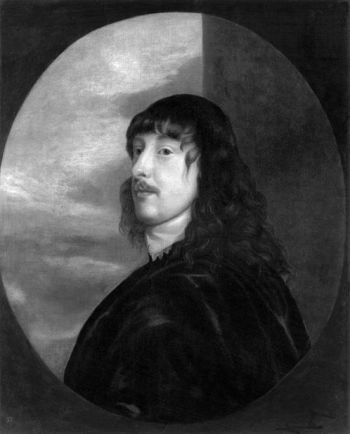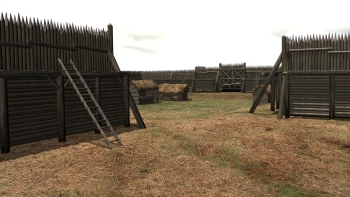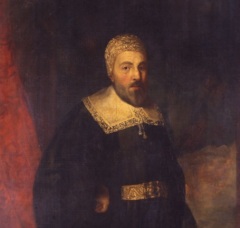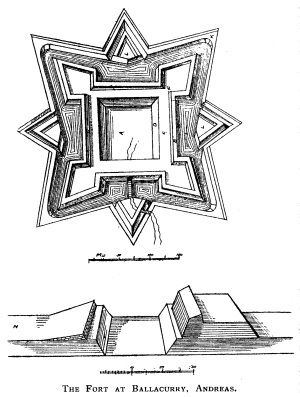If you would like an audio tour of this site just click the play icon below.
The remarkable star-shaped earthwork here at Kerroogarroo (also called Ballachurry) was probably constructed in the build up to the English Civil wars in the 17th century.
It was part of the defences created by Sir John Stanley, the 7th Earl of Derby and Lord of Mann.
He left the Island in August 1651, at the height of the conflict, with his Manx army of nearly 300 men. They boarded his seven ships in Derbyhaven Bay and set sail for England to fight for the Royalist cause.


He left the Island in charge of his wife, the Countess Charlotte and his Receiver General, William Christian (Illiam Dhone). When news of the Earl’s defeat and execution reached the Island, Christian decided to the surrender the Island to the encircling parliamentary forces whose ships were in Ramsey Bay.
Before doing this he had raised a group of supporters who captured the various forts on the Island. Most of them gave in without any problem because many of their non-Manx soldiers had left the Island with the Earl. But there was one fort where it was touch and go for a while as to whether there would be a fight or not.
That fort was here, at Kerroogarroo.
The fort is an extraordinary construction - a massive earthwork, made in the shape of a great rectangle with extended bits on the corners.
These corners actually provided greater protection because all the way around the top of the bank would have been a wooden stockade, and so if someone was attacking the side of the fort you could fire on them from above, effectively hitting them in the back.

No doubt the Earl had his best military people come over from England to design it and lay it out, but it’s still a massive construction. The land in the adjacent fields is the same height as the ground in the fort, but there’s a great ditch running round it all. Presumably the earth to build up the ramparts was taken from the ditch.
On the surface it might appear bizarre why the Earl of Derby built this fort here in the first place. It really is in the middle of nowhere. It’s not near a river – it’s not even on a road, and certainly in the 1650s marching across the fields was the only way to get here as it is today.
One theory is that the Island’s Northern Plain was much more water-logged in those days. Marching from Ramsey to Peel would have involved a route which curved north onto the slightly higher, drier land, and that would have brought any army right past the fort.

One thing that is known, though, is that when Illiam Dhone’s men arrived here on 21st October 1651 to take this fort over, it was garrisoned, and there were some heated exchanges at the gate.
The commander of the fort, Major Thomas Stanley, inside the gate, refused to cooperate. Outside William Teare and Ewan Curghey were shouting at him about the iniquities of Lady Derby and her offer to sell the Manx people for a few pence a piece.
Ewan Curghey, enraged that anyone should refuse to join his high patriotic enterprise, sent one of his soldiers off into the nearby countryside to set fire to the property of John McSayle, who was one of the soldiers garrisoned in the fort.
When the flames were seen rising the men inside started deserting and very quickly the fort was taken, and everything was ready for the Island to surrender to the Parliamentary forces in Ramsey five days later.
Don't forget to bookmark this page in case you want to view it again later.

To view a short video about Kerroogarroo fort, click here.
View a map of other places on the Island